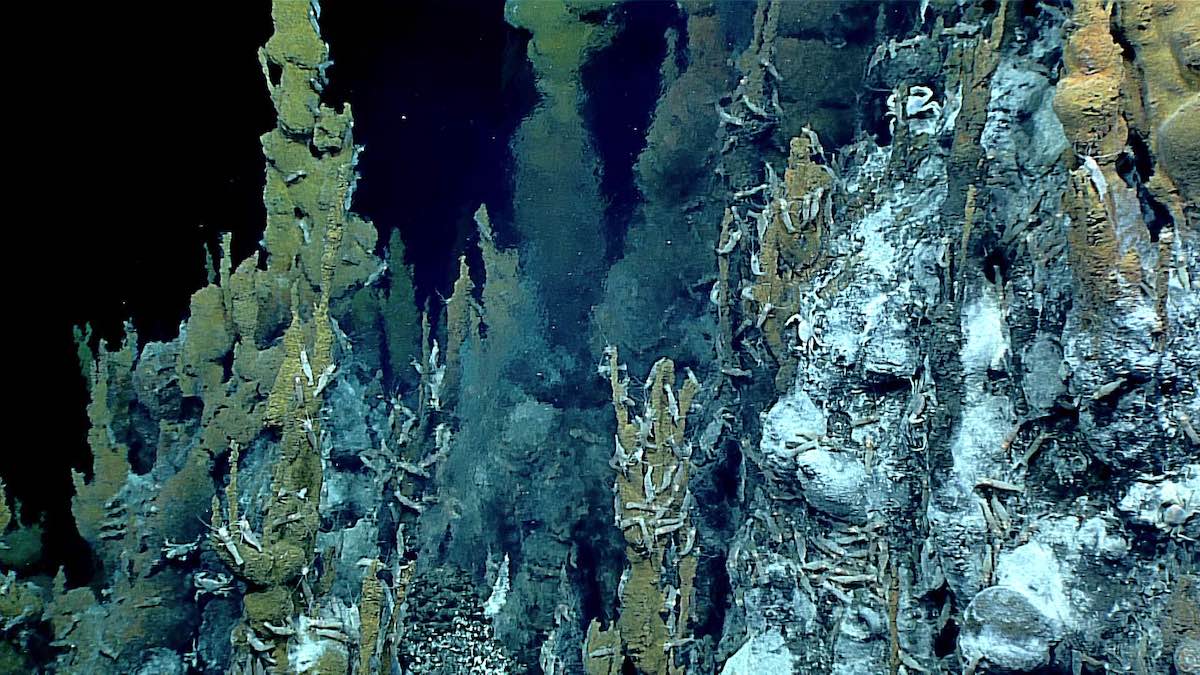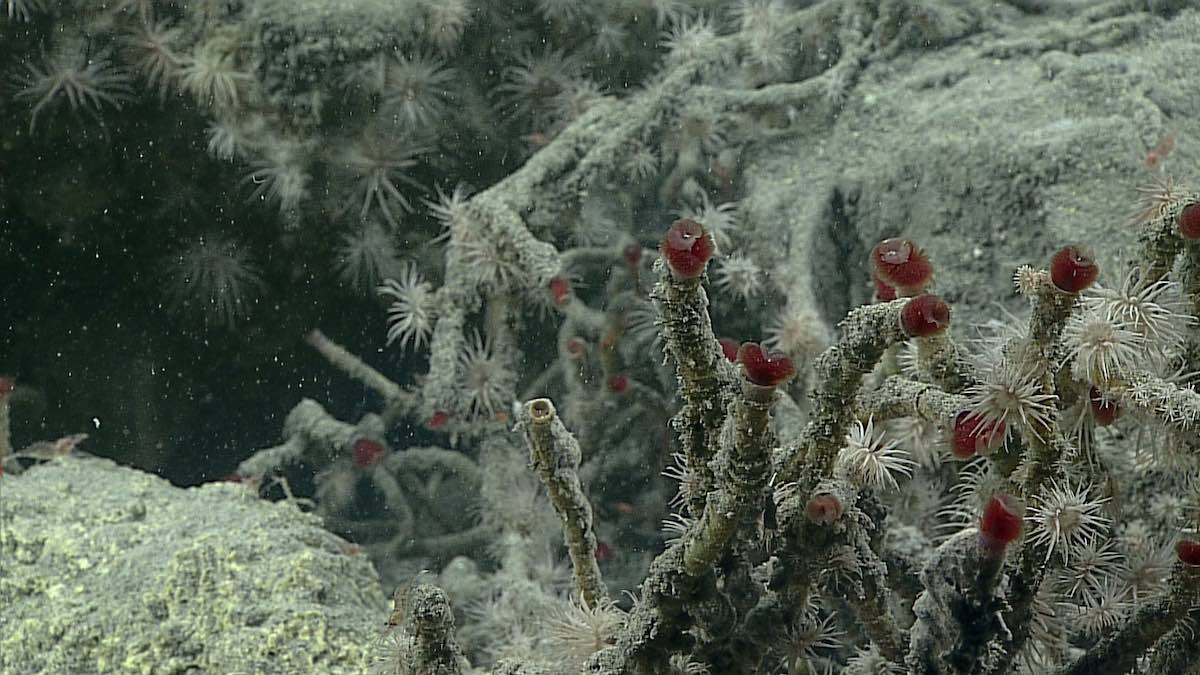Hydrothermal Vents are an Oasis in the Deep Sea
Published by Ocean Conservancy
The deep sea is unlike anywhere else in the ocean—so much so that it almost feels like a different planet. The deep sea is a dark and mysterious place full of specially-adapted creatures, some of which we are just beginning to discover. In fact, we know more about the surface of the moon than we do about the ocean floor.
Not many animals have what it takes to survive on the sea floor. First, they have to be able to withstand high pressures—at 16,000 feet below the surface, the pressure is about 500 times that at the surface. Second, they need to handle pitch darkness, as absolutely no sunlight reaches below 3,000 feet. Lastly, they need to tolerate cold, cold temperatures because the deep-sea water temperature hovers close to freezing.
There are a few creative communities of critters who manage to survive, though, often by taking advantage of special circumstances on the sea floor. For an example, look no further than hydrothermal vents.


Hydrothermal vents form when magma-heated water escapes from inside the earth through cracks in the seafloor. They’re often found in areas with underwater volcanic activity, where moving tectonic plates create fissures in the ocean floor. The water released through these vents is packed with minerals from the earth’s crust, including sulfur and calcium. There are different types of vents, including black smokers, who release very hot, dark plumes full of iron sulfide, and white smokers, who release lighter-colored plumes full of barium, calcium and silicon.
Although you and I might consider billowing plumes of scalding sulfur water inhospitable, there are quite a few ocean animals who have adapted to thrive in these conditions. Since there is no sunlight that deep, organisms can’t rely on photosynthesis to produce food. Instead, microbes around hydrothermal vents use a process called chemosynthesis, where they convert the chemicals inside the plumes into food. These bacteria, in turn, serve as food for other organisms that live on the vents.


One distinctive hydrothermal vent resident is the Riftia tubeworm (Riftia pachyptila). These worms can grow to eight feet long, and have a symbiotic relationship with the chemosynthetic bacteria. The tube worm absorbs oxygen and hydrogen sulfide through its bright red appendage called a plume, which the bacteria then use in the process of chemosynthesis. In turn, the worm receives energy from the bacteria.
Other animals live on the vents, too, including other worms, deep sea mussels, gastropods and deep-sea octopuses. There are even zoarcid fish that specialize in preying on invertebrates that live on hydrothermal vents. Unlike other deep-sea creatures who need to withstand very cold waters, these guys need to be able to handle the heat—the water around hydrothermal vents can reach up to 750 degrees F!
Hydrothermal vents are just one of many examples of animals getting creative to survive in the deep sea (want more? Check out this blog on whale falls!) We’re only beginning to scratch the surface of discovering all the ways animals adapt to life in the ocean depths. It’s up to us to make sure the deep sea—and the rest of the ocean—is healthy to preserve these incredible communities.
Sign up for our emails!
The post Hydrothermal Vents are an Oasis in the Deep Sea appeared first on Ocean Conservancy.
Read the full article at: https://oceanconservancy.org/blog/2020/02/04/hydrothermal-vents/


